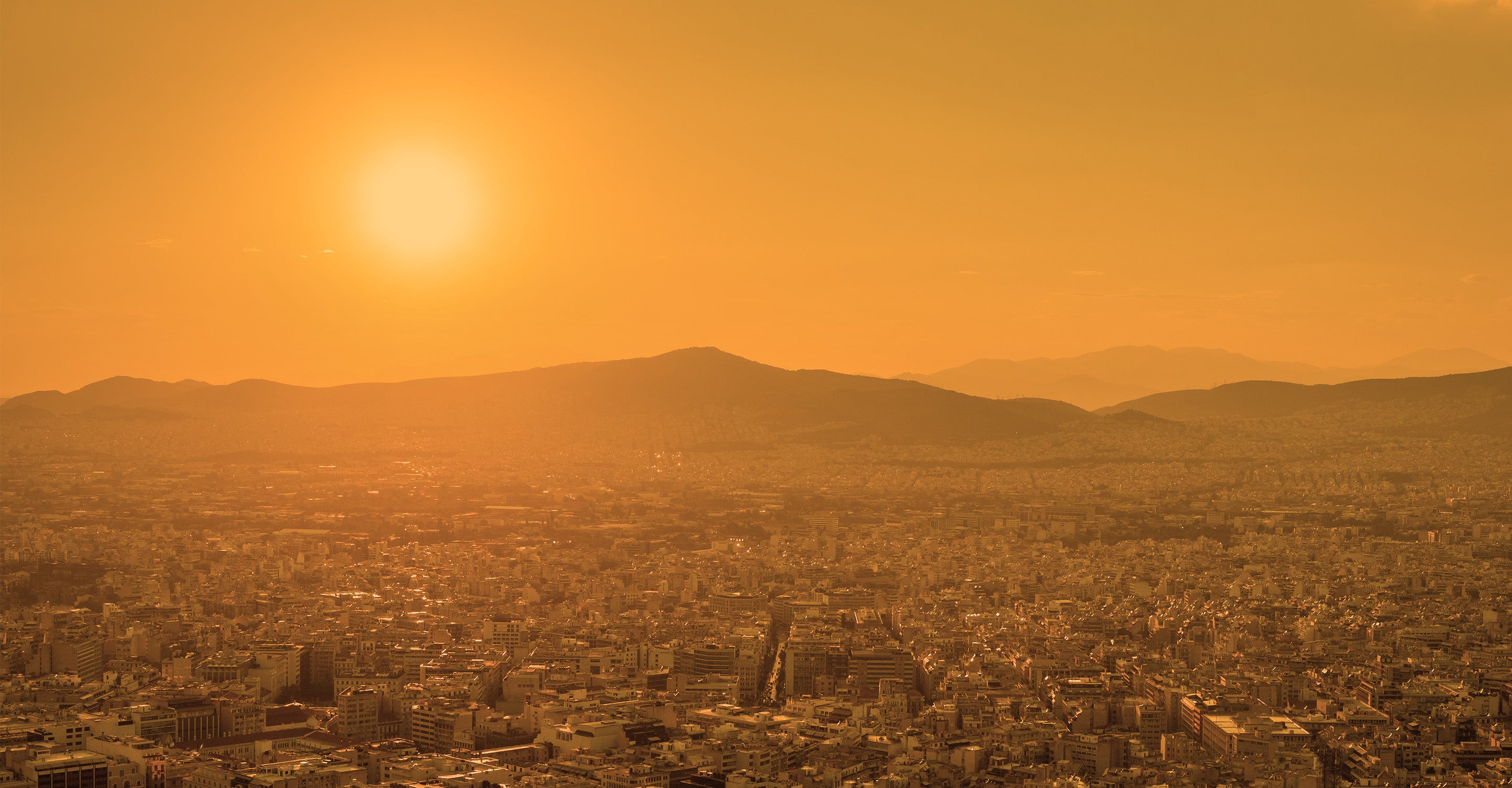Busan air quality map
Live air pollution map of Busan
184.7K people follow this city
Full screen
Contributors
5
Stations
34
Contributors category
3
Government
0
Non-profit organization
1
Educational
0
Corporate
1
Individual
0
Anonymous
Most polluted air quality stations
| # | station | US AQI |
|---|---|---|
| 1 | Noksan-dong | 84 |
| 2 | Yeongju-dong | 82 |
| 3 | Myeongjang-dong | 72 |
| 4 | Gijang-eup | 63 |
| 5 | Hakjang-dong | 63 |
| 6 | Myeongji-dong | 61 |
| 7 | Daesin-dong | 57 |
| 8 | Deokcheon-dong | 57 |
| 9 | Cheongnyong-dong | 55 |
| 10 | Gaegeum-dong | 55 |
Health Recommendations
| Enjoy outdoor activities | |
| Open your windows to bring clean, fresh air indoors GET A MONITOR |
community highlight
Busan most followed contributors
Become a contributor
Get an AirVisual Outdoor and contribute to collecting millions of data points for the Busan map to track local air pollution
Understand air pollution and protect yourself
Busan MAP AIR QUALITY ANALYSIS AND STATISTICS
What are some air quality map readings for Busan?
some of the air quality readings that were seen in Busan over the latter part of September 2022 include US AQI readings that predominantly fell into the 'good' air quality rating bracket, with an overwhelming portion of the map showing figures below 50, with many green colored discs present on the air quality map. A few higher readings were also present with ones such as 53, 57 and 63 also being seen. These fell into the 'moderate' air quality rating bracket (50 US AQI and above), along with a few active fires also being seen on the air quality map above, which could have a prominent effect on the air pollution levels seen in Busan in late September. Readings should be checked regularly as many areas of the city can be subject to changes in pollution levels.
What types of pollutants show up on the air quality maps for Busan?
Air quality maps can help you to get a better understanding of the types of pollution that you are breathing. Whilst pollution at any level is something that you will always want to avoid, there are certain pollutants out there that can prove to be far more harmful to people, especially those with a vulnerable disposition, which will be covered in further detail in the following question. When the air pollution maps show any given level of US AQI, it is important to know that the US AQI figure is aggregated from several main pollutants that are typically found in the air worldwide, hence why they are used to form the universal air quality index (albeit adhering to the standards meted out by the United States, which is considerably more stringent than air pollution ratings in other countries, hence it is used prevalently due to the strictness of its classification standards). The air pollutants that show up on the air quality maps in the form of US AQI are carbon monoxide, and ozone (more commonly referred to as smog when it gathers in large enough accumulations, quite visible in certain areas during the hotter months of the year, particularly over busy roads and motorways).
Others include sulfur dioxide and nitrogen dioxide, both of which are released prominently by vehicles, although they do find their release from a majority of combustion sources. However, due to how prominently they are released from all manner of vehicles, higher quantities of these may be seen over areas that have a high level of traffic. This is when air pollution maps in Busan can be useful in identifying whether you are presently using highly polluted routes daily, which can highlight the fact that certain preventative measures such as wearing fine particle filtering masks. If it is possible then avoiding these areas is the most optimal option as it removes the need to utilize protective measures and reduces overall exposure levels on an annual basis.
Other forms of pollution that are shown on air quality maps in Busan, due to figuring largely into the US AQI readings, are the two forms of particulate matter, PM2.5 and PM10. Due to the minute size of PM2.5, it can cause a great number of health issues amongst the population in Busan, and many other cities in Korea. Once again, whilst air pollution maps and air quality maps do not show every single pollutant throughout the entire spectrum (as there is a huge variety, although they can sometimes be categorized into sub-groups such as volatile organic compounds (VOCs), or as mentioned the two forms of particle-based pollution), they can give a good idea of what types of pollution you are facing, with higher US AQI readings across the air pollution maps containing a significant amount of all of the above-mentioned forms of air pollution. For more in-depth details on the volume of the different forms of pollution found in a given city, the city pages on the IQAir website have graphs that show the volume of the different main pollutants, both hourly, as well as daily in Busan.
What pollution-related illnesses can be avoided by using air quality maps in Busan?
Air quality maps can indeed provide extremely helpful information, updated constantly throughout the day, and can aid greatly in reducing some of the more prominent diseases and other health issues that arise as a result of excessive pollution exposure. When the US AQI readings are shown to be high in a given area, several different health issues may arise, ranging from more superficial and short-term ones to severe health consequences. As they have their pollution classification and ratings (as is shown clearly in the color-coding on each reading across the air pollution map in Busan, with the lighter colors indicating the best levels of air quality up to moderately polluted ones, and darker colors indicating unhealthy through to extremely dangerous levels of air pollution), there will be higher chances and risks of people suffering from health issues if they are in an area that is shown on the air quality map as being of a more unhealthy level. Some examples of health issues that may occur when readings on the air pollution maps in Busan are ones such as dry coughs, irritation to the mucous membranes such as the nose, eyes, ears and throat, as well as potential infections of the respiratory tract, particularly when higher amounts of pollution are inhaled over a longer period.
Other more serious issues include those that fall under the chronic obstructive pulmonary disease (COPD) bracket, which can include asthma, bronchitis, emphysema and pneumonia. In regards to how helpful air quality maps and air pollution maps can be in reducing these harmful occurrences, they can show specifically which parts of Busan have the highest levels of pollution (due to certain meteorological and anthropogenic, as well as industrial conditions causing certain parts of the city to be far more polluted than others are), and thus preventative measures can be taken accordingly. If an area shows high US AQI readings on the air quality map, and indeed continues to stay that way over prolonged periods, which is a common sight in areas such as highways and main roads that see a large amount of rush hour traffic, then actions can be taken.
Avoiding certain areas when they have higher readings on the air pollution maps can reduce potential future health problems, as well as reduce the risk of aggravating pre-existing ones. As such, air quality maps can be very helpful in identifying which areas of Busan and indeed any other city in Korea are the most polluted, and measures such as avoiding outdoor activity in said area, or wearing particle filtering masks if outdoor travel cannot be avoided (in the case of daily commutes) will all be extremely helpful in reducing pollution-related illnesses.
What are some benefits of the major benefits from using air quality maps in Busan?
Along with the city pages in use on the IQAir website, air pollution maps and air quality maps are now available for use in Busan and throughout Korea. They have added features and advantages over the regular city pages, although utilizing both of them can aid greatly in reducing any air pollution-related illnesses, as well as the overall exposure level for the citizens of Busan. Air quality maps use a data feed that is updated throughout the day, and as such can be referred to at any time with consistently updated figures.
With many different stations providing this data to the air quality maps in Busan, they can give an accurate measure of which areas of the city have the most polluted air, as well as during which times.
Busan air quality data attribution
5Contributors
 Korea Environment Corporation
Korea Environment Corporation30 stations
 Busan Metropolitan City
Busan Metropolitan City31 stations
3 Government Contributors
 Busan Foreign School
Busan Foreign School1 station
Educational Contributor
 맑고푸르게
맑고푸르게1 station
Individual Contributor
4 Data sources
Where is the cleanest air quality in Busan?
- Noksan-dong 84
- Yeongju-dong 82
- Myeongjang-dong 72
- Gijang-eup 63
- Hakjang-dong 63
- Myeongji-dong 61
- Daesin-dong 57
- Deokcheon-dong 57
- Cheongnyong-dong 55
- Gaegeum-dong 55
- Gwangan-dong 55
- Bugok-dong 53
- Daeyeon-dong 53
- Deokpo-dong 53
- Hoedong-dong 53
- Jangnim-dong 53
- Busan Foreign School 50
- Hwamyeong-dong 50
- Jaesong-dong 50
- Jeonpo-dong 50
- Oncheon-dong 50
- Samrak-dong 50
- Dangni-dong 45
- Jwa-dong 45
- Yongho-dong 45
- Daejeo-dong 41
- Yeonsan-dong 41
- Cheonghak-dong 38
- Sujeong-dong 38
- Choryang-dong 37
- Yongsu-ri 37
- Gwangbok-dong 36
- Taejongdae 34
- Haeundae Beach 17









